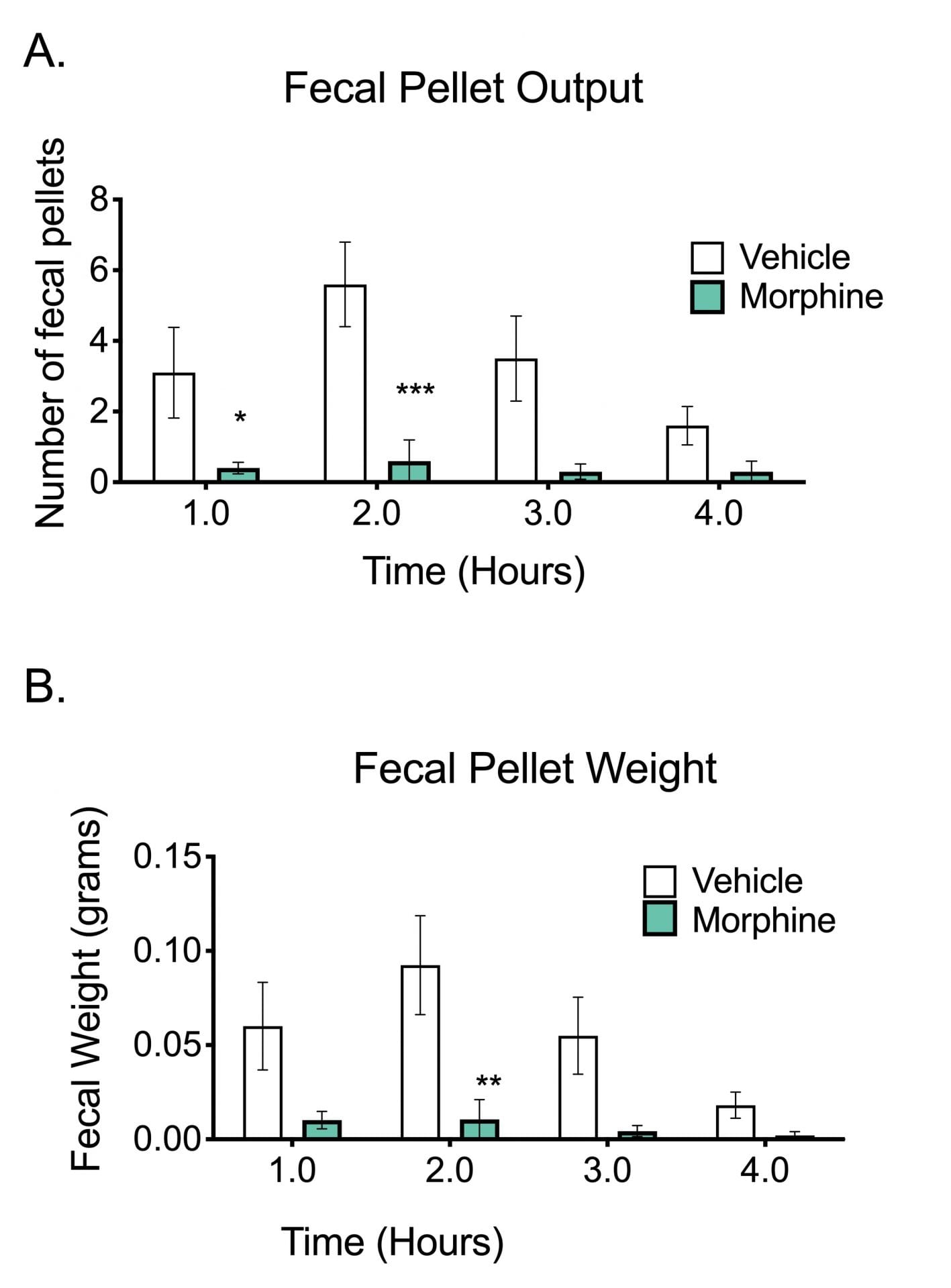Fecal Pellet Output
Discover how Melior’s unique phenotypic screening platforms can uncover the untapped value of your candidate therapeutic
A simple and noninvasive means of evaluating gastrointestinal function involves measuring fecal pellet output over a given time period(s). This can involve not only pellet counts but also measuring total wet weight, total dry weight and descriptive observations. In turn these measures can be used to calculate average weight / pellet and wet versus dry ratio which provides a measure of moisture content while also serving as a colonic transit test.
The study illustrated below shows how the inhibition of colonic motility by an opioid results in reduced fecal pellet output
 Fecal pellet output as a colonic transit test. C57Bl/6 mice were fed ad libitum until the acclimation period at approximately 9:00 AM. Then mice were weighed, dosed with vehicle or 10 mg/kg MORPH SC, singly housed in polyurethane cages without access to food, and acclimated to the procedure room for 30 minutes prior to the study, with free access to water. With a study start at approximately 9:30 AM, at each subsequent hour after administration up to 4 hours, the number of fecal pellets (A) and weights (B) was recorded. Data are mean ± SEM and evaluated using unpaired t-test (N=10). *p<0.05, **p<0.01, ***p<0.001.
Fecal pellet output as a colonic transit test. C57Bl/6 mice were fed ad libitum until the acclimation period at approximately 9:00 AM. Then mice were weighed, dosed with vehicle or 10 mg/kg MORPH SC, singly housed in polyurethane cages without access to food, and acclimated to the procedure room for 30 minutes prior to the study, with free access to water. With a study start at approximately 9:30 AM, at each subsequent hour after administration up to 4 hours, the number of fecal pellets (A) and weights (B) was recorded. Data are mean ± SEM and evaluated using unpaired t-test (N=10). *p<0.05, **p<0.01, ***p<0.001.
